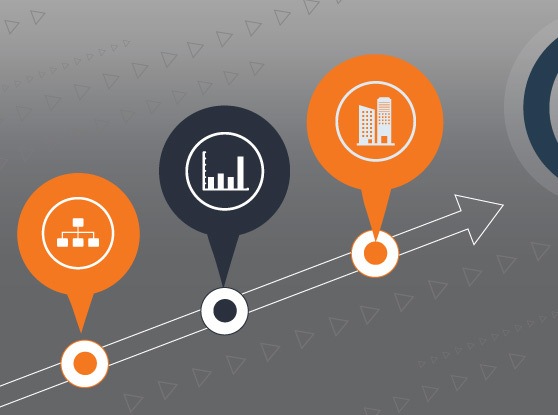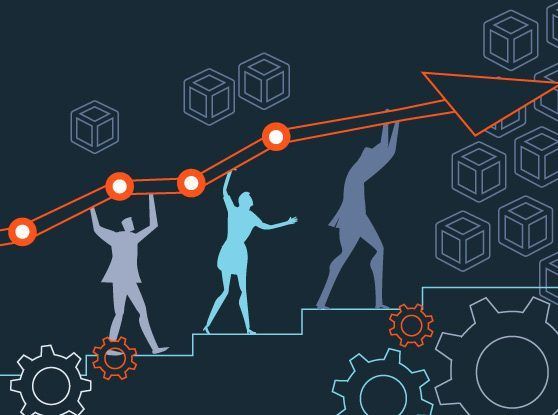
On September 16, JFrog IPO'd and listed on the Nasdaq as NASDAQ: FROG ?.
While DevOps has recently become the modus operandi of software development, JFrog has been pioneering DevOps since before the term even existed. Shlomi Ben Haim, Yoav Landman, and Fred Simon founded JFrog in 2008, a full year before the term DevOps would be coined. In a world that was still very much waterfall-centric, they had the foresight to plan for and build an agile future.
A decade ago, it was not uncommon to have to wait a full year for a new feature to be added to the application you’re using, or find your favorite website or web service down for an extended period of time, especially when implementing new features. This was due to the pitfalls of Waterfall software development. With traditional waterfall, software delivery was less flexible and iterative and suffered from a higher risk of failed deployments due to manual processes and bottlenecks that often lead to downtime, forcing companies to push out updates infrequently or otherwise risk services rendered ineffective. Software delivery was inefficient. Thanks to JFrog spearheading a DevOps and agile world, this is no longer a cause for concern. JFrog’s liquid software platform enables companies to push out continuous updates without worrying about downtime risk.
In the years we have gotten to know JFrog’s CEO Shlomi, he has continuously impressed us with his ability to deeply understand nuanced developer needs. He was able to see what few others could – connecting seemingly orthogonal pieces of the software lifecycle with disparate parts that were in reality rapidly becoming interlaced. In conversations with us, Shlomi articulated his vision that as the DevOps world shifted from source-code-centric to binary-centric, JFrog’s first product, Artifactory, would become the center of gravity. By being the cornerstone of the new developer workflow, JFrog could add new products like Xray, Distribution, and Pipelines and evolve from a single product to a powerful DevOps platform.
For Shlomi, it was critically important to build JFrog as a product-first and developer community-first driven company. He always emphasized to us that listening and incorporating feedback from developers would ensure that JFrog built the best products – and it is clear that their community loves them! Developers avidly collect each year’s edition of JFrog Superhero t-shirts (our favorites are Bat Frog and Daenerys Frogborn), and their annual user conference, SwampUp, continues to swell in popularity year after year.
A large part of what makes JFrog so great is their steadfast belief and willingness to take both product and business risks. For example, delivering your product through an open core model is now seen as a viable strategy to drive grassroots adoption among developer communities and eventually expand to enterprises. When Artifactory was first open-sourced (in 2006!), this was not apparent at all. Yet, the JFrog team knew that it would be critical to actively engage with and listen to the feedback of their community. Similarly, while the concept of “shift left” towards incorporating security into DevOps has only really started to codify as a concept in the past few years, the origins of JFrog Xray are already nearly 5 years old. Today, we take many of these tailwinds to be clear and apparent, but that was certainly not the case at each point in time that Shlomi and the JFrog team had the conviction to build each product. JFrog lives and breathes the mantra they advocate to their customers: “Release Fast or Die.”
Today, millions of developers use JFrog as an integral part of their workflow across the community and more than 5,800 paying organizations. It is rare to come across such a category-defining company as JFrog, used in the same breadth of comprehensiveness for DevOps as Github is for code management, Atlassian is for software development, and Postman is for APIs.
Shlomi and the JFrog team have built game-changing and impactful products that are the engine for so much of what we as consumers and business users get to enjoy. Their framework enables new features, functions, and updates to get rapidly released where they are most needed and powers so many aspects of our lives, from the video-conferencing platforms we live on every day, to the healthcare systems that enable contact tracing, and even the helicopter’s software that tracks wildfire breakouts.
We have been so incredibly lucky to be partners with and investors in JFrog. While their IPO represents the culmination of years of effort, we believe JFrog’s story is just getting started, and we’re so excited to witness how JFrog will continue to leap forward!









